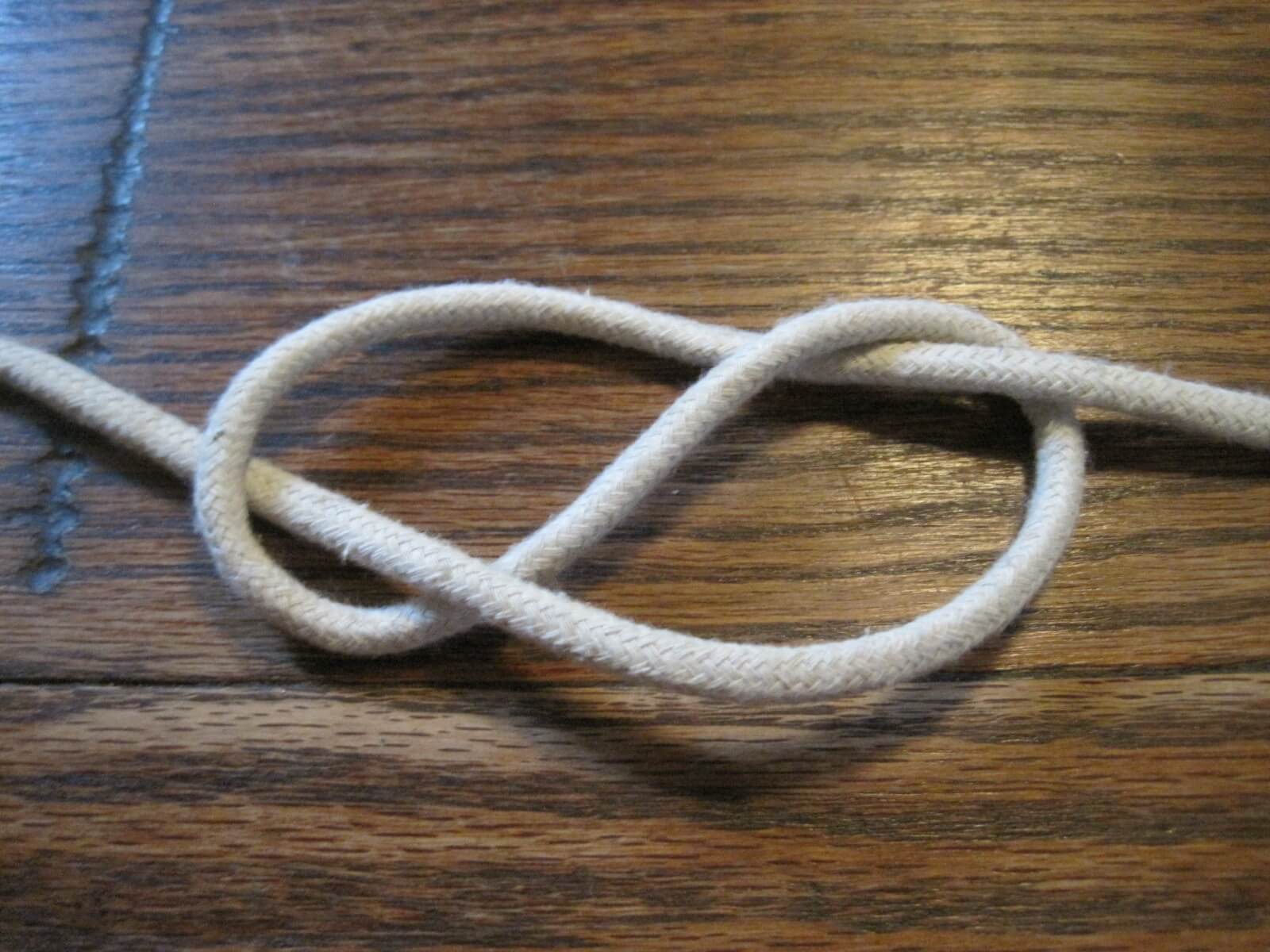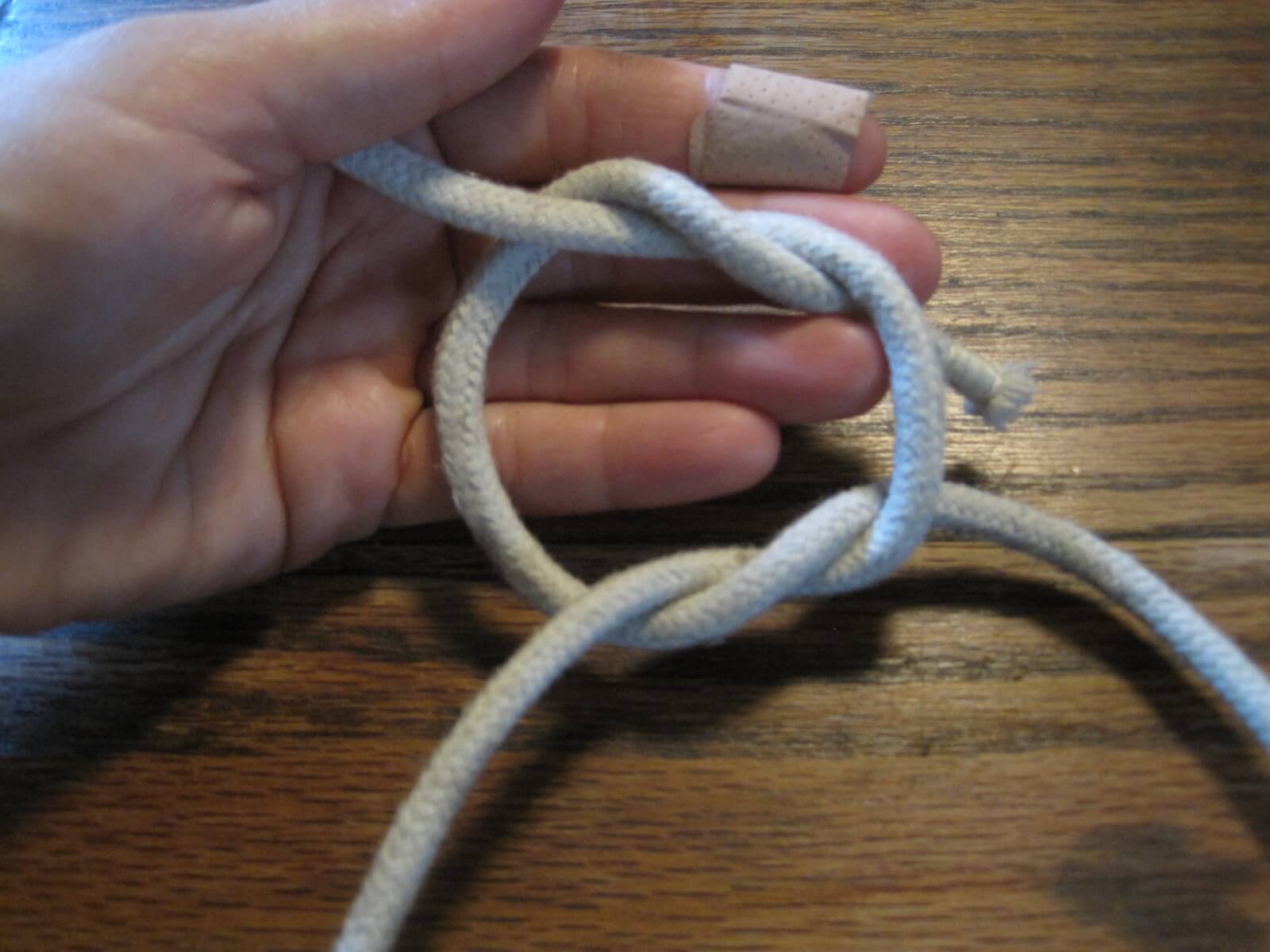Once upon a time, there were things that needed to be held in place, tied down, hoisted up, and cinched shut. The humble rope — and the knots it could tie — was the answer to all of these problems and more. Ropes stretched throughout our ancestors’ histories, securing the rigging on a ship, crisscrossing packs on muleback, hobbling the dairy cow on the frontier, and holding up a pair of patched trousers. Every realm of outdoor life from the ocean to the mountains, crafted and refined its own vast array of ingenious and useful knots.

Modern life, in contrast, has become surprisingly free of knots. We have instead contrived a huge array of fasteners to compensate for our increasing unfamiliarity with rope. But for all the flashy, clanky ease of our modern hardware, the fact of the matter is the homestead seeking self-reliant simplicity can literally take most fastening, hauling, and securing matters into their own hands by relearning rope and knot skills. A single length of sturdy rope can transform into a hundred different tools when put in the right arrangement.
In this article, I’ll share some of my favorite knots that I use on a daily or near-daily basis on our homestead (though, as you’ll see, not all of them are technically knots). The uses I list are merely the ways knots are represented on my land, however. Every knot has its own specific strengths and weaknesses, and their uses are multifaceted.
These few favorites are the tip of a very large, very useful iceberg. Once you start rediscovering the utility and enjoyment of knot tying, I heartily recommend checking out a knot tying book from the library and learning more. Geoffrey Budworth’s book, The Ultimate Encyclopedia of Knots & Ropework, has clear photographs and has been on my shelf for years.

As with most things, the more you learn, the more you realize how much there is to learn. As such, I recommend keeping a 6-foot length of cotton clothesline handy as a practice rope. As you’ll see, it’s the rope I used to make the example photos. If you are interested in learning how to stash these handy knots, hitches, and bends into your mental toolkit, practice is the only way, and a practice rope is a great aid. You can even keep a practice rope in a bag or pocket, and practice when you have downtime.
So all that said, let’s get into knowing some knots.
Some Knot Terminology
Knowing these basic knot terms will help you understand the instructions on how to tie a knot, and the purpose of each knot (or hitch, or bend). All these terms have been adapted from The Ultimate Encyclopedia of Knots & Ropework.

- Bight (pronounced the same as “bite”): fold of rope somewhere between the ends, often the set-up for a certain stage in a knot (makes a “U”)
- Loop: bight that has a crossing point (makes a “O”)
- Working end (sometimes called the bitter end): end of the rope that is actively being tied into a knot
- Standing end: inactive bulk of rope that is not being tied into a knot
- Hitch: knot used to make a line hold fast to an anchor point or to another rope
- Bend: knot that binds two separate ropes together, typically easy to untie
- Knot: term for stoppers, loops, and self-sufficient bindings — unlike hitches and bends, it doesn’t need to be tied to something else to exist (often confusingly used in modern times to describe any binding of rope)
Related Post: 20 Fun and Useful DIY Paracord Projects
Some Useful Knots and Ways to Use Them
Every knot’s name is linked with a helpful animation from Animated Knots to teach you how to tie it, step-by-step.
Clove Hitch

Though not the most secure of hitches (the cow hitch is supposed to be more yank-proof) the clove hitch is a quick and easy way to hang something that you’ll want to tie and untie on a pretty regular basis. It works when held in steady tension (as in hanging something) rather than put in a situation where it will be pushed and pulled (and easily undone). That said, I use it to handily store my washing plunger off my clothesline — it has held up in 60 mph winds! This useful hitch can be tied on a bight or tied with a working end, meaning you can tie it to a post, ring, or several times on a single rope.

Bowline

Pronounced “boh-linn” this knot’s name betrays its marine roots, but I find it quite useful on the land as well. Though there are many variations that share the bowline name, they all create a dependably static loop that can bear a significant amount of strain. No matter how much it gets jerked and yanked around, it doesn’t slip or loosen, and can still be easily untied. Use it to secure anything that might be under stress such as tying a rope to a tarp or temporarily fixing an animal to a post. I use it daily to tie my chicken coop door open.
Single, Double, or Triple Fisherman’s Bend

This knot is great for tying together two ropes of similar thickness. As you may have guessed, every increase of the knot makes it a stronger tie. I’m a huge fan of using this knot for making a rope into a reasonably secure loop (it’s perfect for making slide-adjust bracelets as well — for all the parents with crafty little kids out there). Made with thicker rope, it can be a little tough to untie, but when made with string (or with fishing line, as its name suggests), it’s impossible to undo and will need to be cut.

Figure of Eight Knot

True to its name, the figure of eight knot does look like the number 8 on its side when tied correctly. I use this any time I need to have a stopper at the end of a piece of rope. It’s what I used to suspend the swinging perch in our pigeon loft, for example. The knot is a little bigger than a simple overhand knot, and easier to untie, so it works better as a stopper. It can pull through a hole if the hole is too big, however, so always give the knot a test tug to see if it’ll do the job you want it to do, and don’t depend on it to haul something heavy.

Reef Knot (Sometimes Called Square Knot)

Easy to tie, but easy to tie wrong, this is a simple knot that may require a surprising amount of practice to make sure you know how to tie it right. This knot works when tied with two ropes of the same diameter. It will slip if used with unequal ropes (try using the sheet bend for that instead). I’ve used it to temporarily hold an animal’s door shut, to finish the lashing on my jerry-rigged Chinese long bean tipi, or to make a makeshift belt.

It may look like the “double knot” we tied as kids (officially termed a granny knot), but it’s more secure and won’t slip apart as easy. As you’ll see in the step-by-step instructions, you want to pass “right over left, left over right.” The end result should have the ropes laying side by side as they pass under their respective loops.
Sheepshank

The valuable sheepshank can offer two uses. It can temporarily shorten a rope that you don’t want to cut, and when this is the case, be sure that all three strands in the center are equally weighted so that they work together. This knot can also allow a rope that has been chafe-damaged to still be temporarily used — as long as the knot creates a “bypass” over the damaged area. In this situation, be sure to leave the damaged portion (represented by a knot in the photo) slack, even while the two remaining strands are in tension.


This is truly just the start! I’m sure that any knot-wise person would have a different set of favorite knots, and that speaks to the intriguing variety and usefulness of this somewhat forgotten art. Beyond the homestead, there’s a knot for almost any interest. Whether you’re interested in history, home décor, outdoor sports (rock climbing, anyone?), the strangest, catchiest music video you’ve ever witnessed (Trucker’s Hitch), tying your shoes with a knot that actually won’t untie at the wrong moment (reef knot), survival training (different types of lashing will build you a shelter and cook your food), or being a little more self-sufficient with a bit of rope in your pocket.

So, chime in — do you use knots often? Which are your favorites? And how have you used them? We’d love to hear below.
